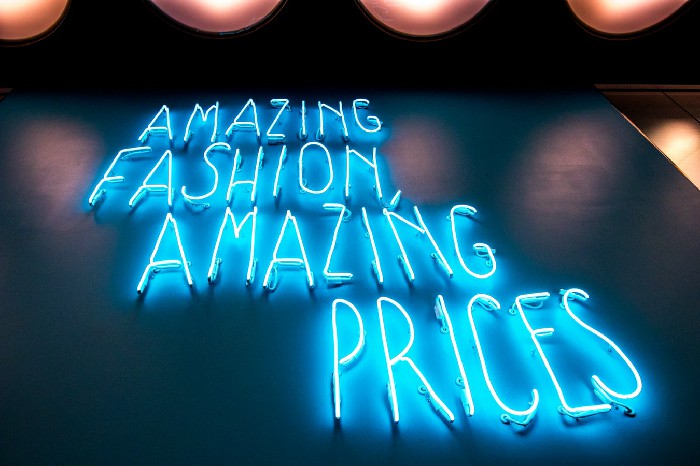
Image Via : Unsplash
In this day, if you want to shop ethically, shop smart, stay on budget and look stylish all at the same time, it might seem like an unachievable goal. But there are some brainy fashion lovers out there who’ve got the system soused and SPOILER ALERT, they aren’t shopping fast fashion or high end!
Fast fashion is bad for our planet in a thousand ways and now it appears that high end clothes may not be far behind. It’s time we break down the myths surrounding both the fast fashion industry and designer brands, while looking at what our other options are. It’s time to take some tips from the smart fashionistas who choose to shop their own way.
What’s Wrong With Fast Fashion?
Incase you’ve been living under a rock, let’s recap why fast fashion isn’t the best choice for you or anybody else and why many clever fashion lovers choose to avoid it.

Image Via : Unsplash
We’re living in a disposable world – everything from the things we use in our kitchens to the clothes we put on our back are considered disposable and this isn’t a good thing. Having access to extremely cheap clothes has actually changed the mentality of their wearers, they no longer care for their clothes in the same way. They think it’s fine and even expect their clothes not to last since the price is so little, they can replace it all in an instant. People are now throwing out more clothes than ever before, clogging up our landfills or being put into clothing bins and shipped off to countries who don’t need those clothes either – our planet is over run with clothes.
Thanks to fast fashion, there are no fashion seasons anymore. Their customers expect fresh designs every month if not every week and their patience is only wearing thinner and thinner. The quicker a company can release new designs and have them in store ready for purchase the better which has completely eradicated the idea of producing dedicated season collections such as Fall/Winter collection, Spring/Summer and Resort collections. The fast fashion industry is designed to make your feel like your closet needs updating on a weekly basis. Instead of producing two or three collections per year, they produce up to 52 collections per year, all focusing on micro-trends. Micro-trends, as their name suggests, go in and out of fashion like a trend only at rapid speed. Ever bought a dress in a style that just wasn’t you but you bought it anyway because everybody else was loving that style? Yes, that was a micro trend. And did you also wear said dress only once or twice before realizing you didn’t actually like it or everybody else stopped wearing the trend seemingly overnight? You were suckered in, it happens to us all, don’t worry. The point is that these clothes are designed to make the wearer feel off trend within the first couple of wears.
So I Should Shop High End Designer Labels Then?

Image Via : Unsplash
You would think that spending much more on your clothes would mean that nobody is exploited and everyone is paid fairly, unfortunately that’s not always the case. Many high end designer goods are made in the same factories as fast fashion, using their same principles when it comes to work ethics and safety practices. It’s true that high end designer garments often have more complicated construction techniques and contain higher quality finishes which can help to make them last longer. But when it comes to closet staples like the humble t-shirt, there’s very little difference between one from a fast fashion retailer and one from a high end brand, except for the price. Spending $300 on the same quality t-shirt as you can get for $30 isn’t a smart move either.
With high end designer brands, you’re mostly paying for the brand name and their advertising bill. Advertising costs a lot, especially if you want to advertise in Vogue. Even worse, if the garment you’re buying is covered in branding and logos as part of the design, you’re actually paying them for you to do their advertising! Their clever marketing makes their brand appear luxurious and too often people buy into that blindly, without actually looking at the quality of the products they’re offering.
Shop Like A Clever Fashionista

Image Via : Unsplash
So what’s a girl to do then? The key is to shop smart and judge what something is worth. The best place to start is with mid-range brands. This includes smaller, less well known designers, independent designers, independent boutiques and diffusion lines of high end brands. It’s in this tier that you’ll find prices that won’t immediately make you certain that the people involved in its creation aren’t being fairly paid but they won’t break the bank either.
Take time to look at what you’re buying and judge the item, weighing up what you’re receiving against the price on the tag. If you can clearly see there is intricate work involved in the design, some special properties or features that may cost more to produce or even high end, premium fabric used in the construction, you should expect to pay more. However, if the garment looks like it could have walked out of any fast fashion retailer or already looks like it will fall apart after three washes and still has a high price, you’re probably paying for the name.
The fashion industry in general is there to tempt us to buy clothes that are in fashion and that we want to wear as an expression and extension of our personalities. The fast fashion industry tempts us into buying because we think we’re getting a good deal, a bargain price. On the flip side, high end designers tempt us because we think we’re spending a small fortune for quality. Unfortunately, quite often neither of these things are true which is why clever fashionistas avoid them both and judge everything they buy on its worth alone.
